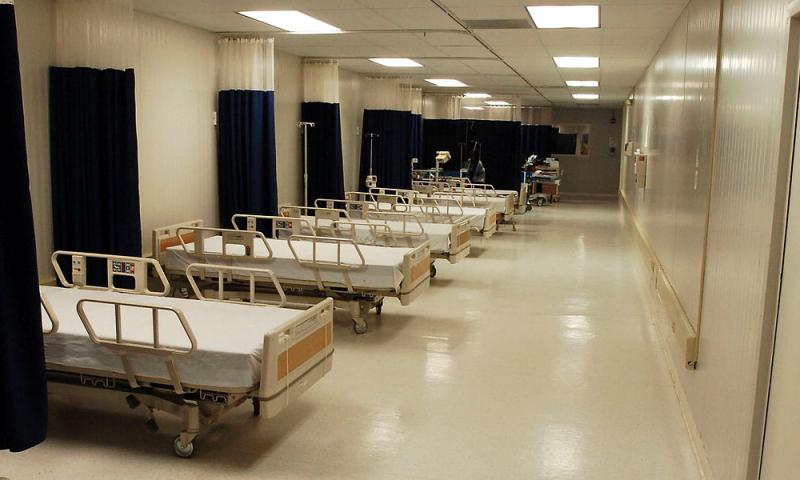Budget 2020: Will voices of Spinal Muscular Atrophy patients be heard?
LETTER | On Aug 8, members of the public were invited to contribute their ideas and proposals for the preparation of Budget 2020 which will be tabled on Oct 11, through a special website.
Finance Minister Lim Guan Eng said this would enable all segments of society to submit views in line with the government’s efforts to build the nation and prosperity of the people.
We were extremely thrilled and grateful with the opportunity given as it is so rare or has never happened before. We thought we should applaud our finance minister for his proactiveness in hearing the voices of the rakyat and to listen to what the rakyat really want from the Pakatan Harapan government.
Let us tell you why this opportunity is so important for baby Hana and other children and adults like her.
At first glance, Nur Hanan Affeeya Amrun Shah looks like a happy and healthy baby. Nur Hanan, or Hana as she is lovingly called, lies on her back every day. Her movements are limited. She can't lift her head, and her limbs appear to flop around her. Her muscles seem limp, or lack mobility, but her facial expressions are cheery and open.
Hana has been diagnosed with Spinal Muscular Atrophy (SMA) Type 1. This is a rare genetic neuromuscular disease and affects the nerves and muscles controlling respiration and movement and is terminal. Hana has been staying in a government hospital during the last two months due to pneumonia, which made her dependent on a special machine to breathe 24 hours a day now.
If Hana was born in Croatia, Slovenia, Slovakia (with poorer GDPs and/or GDP per capita than Malaysia), or close to 50 other countries in the world - she would have been treated by doctors with a drug therapy called Spinraza.
Spinraza was approved by the US Food and Drug Authority (FDA) in 2016 to stop the progression of SMA.
Sadly, Hana was born here in Malaysia, and so were other children and adults with SMA – where they were left to die without life-saving drug therapies.
Hana was born on Aug 11, 2018. She was tested and diagnosed immediately after she was born, as her late brother succumbed to SMA in 2017 at five months of age. Fortunately, Hana was able to celebrate her first birthday this year in the intensive care unit with her parents. However, we hope she will be able to celebrate more birthdays, only if she is treated soon.
If Spinraza was provided in Malaysia last year, her quality of life would be very different compared to now. She would not need to use the breathing machine and she would probably sit and play like other kids who were treated in countries which have access to Spinraza.
Since 2016 there are now two approved drug therapies (Spinraza and Zolgensma) that can stop SMA, and a third (Risdiplam) is expected to be approved later in 2019 by the US FDA.
Many governments and medical communities have studied closely the efficacy, safety, and effectiveness of these drug therapies in comparison to supportive care in SMA patients of all ages and types, in order to approve and reimburse the treatments for SMA patients.
We can therefore safely reference many sources that provide positive and compelling key outcomes in mortality, permanent ventilation, motor function and milestones, and safety.
Patients with SMA, from the young to the adult, demonstrate remarkable resilience, courage, determination and talent to lead productive lives and contribute to Malaysia.
Despite the daunting obstacles they face in mobility and deteriorating health, many are scholars and graduates with advanced degrees in law, humanities, arts, sciences, engineering, and interior design from Cambridge University, National University of Singapore, Royal Melbourne Institute of Technology, Nottingham University, University of Michigan, Universiti Malaya, Universiti Kebangsaan Malaysia, First City University and many more.
Those who didn’t get the chance to receive such an education have shown incredible resilience in educating themselves and have become entrepreneurs in fashion and design, IT, food and beverage, public speaking and disabled-friendly sports.
The need to treat SMA has been raised so many times in public.
This is the voice of the rakyat for SMA patients in Malaysia and their supporters, as is demonstrated on the Finance Ministry Facebook page, where more than 90 percent of the comments urge Harapan and the Finance Ministry to fund the treatment for SMA.
The question on people’s minds is the current government’s response today - where is the demonstrable commitment to equity in healthcare and a fair budget provision for SMA?
In the 2019 budget, RM50 million was allocated to treat rare diseases, Hepatitis C, as well as haemodialysis. SMA was left out.
The families with SMA deserve equitable rights to health and life and be a part of the new Malaysia, which tragically is denied to them if they do not get access to life-saving drug therapies. Please save lives and improve the quality of life for Hana and other children and adults like her.
This is a matter of collective responsibility and high urgency.
Please allocate in Budget 2020 a meaningful amount for life-saving drug therapies to treat SMA.
From mothers of children with SMA:
Hamidah Mohd Ghazali
Yap Sook Yee
Shahratul Azmah binti Shamsudin
Matilda Cruz
Pruiney Lee
Chan Wei Kuan
Nurul Nadia
Zaidah Abdullah Satari
Nur Umairah Irdina
Noorhannani Suhaimi
The views expressed here are those of the author/contributor and do not necessarily represent the views of Malaysiakini.
RM12.50 / month
- Unlimited access to award-winning journalism
- Comment and share your opinions on all our articles
- Gift interesting stories to your friends
- Tax deductable
